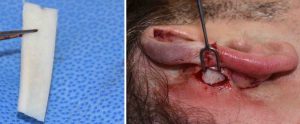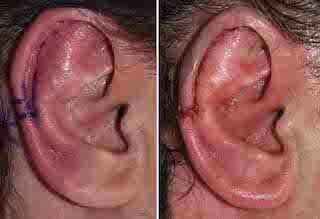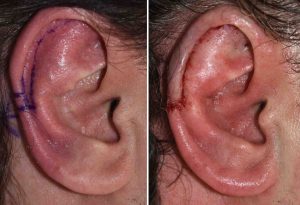Background: The shape of the ear can be changed by a variety of surgical procedures. The most common is the setback otoplasty for the protruding ear. By bending back the main cartilage framework of the ear using primarily sutures, it resets its cartilage shape memory through prolonged suture immobility. While the otoplasty is often viewed as a ‘simple’ surgery, it is prone to a variety of aesthetic issues such as shape asymmetries as well as under- and over correction.
A less commonly known ear reshaping procedure is for vertical height. When the ear is perceived as being too long it can be changed surgically. The obvious choice is to shorten a long or big earlobe which helps decrease lower ear height. This is done through a skin removal technique. But decreasing a larger upper ear which consists of the cartilage framework is less obvious. While cutting through the center of the ear in a full-thickness fashion is effective, the scar it would create would be unacceptable. This is only used in ear reconstruction of skin cancer defects. The superiorly-based scaphal flap technique is the reduction method that decreases the height of the ear or reduces a large scapha with acceptable scar locations.
While both a reverse otoplasty and vertical ear reductions are uncommon ear reshaping procedures, when done in a simultaneous surgery they are even more uncommon.
Case Study: This young male had a prior history of otoplasties which was pulled back too far in the central portion of the ear. (at the level of the tragus) In addition he felt his upper ear was a bit too tall with a total ear height of 70mms. He felt his ear lobules were fine in shape and length.


Due to the very robust blood supply of the ear, it can tolerate and heal satisfactorily from multiple simultaneous incisions.
Case Highlights:
1) Vertical reduction of the upper ear is done by s scapula flap technique.
2) Partially reversing an overdone otoplasty is done using an allogeneic cartilage graft.
3) Both vertical ear reduction and a revere otoplasty can be safely and effectively done at the same time.
Dr. Barry Eppley
Indianapolis, Indiana




